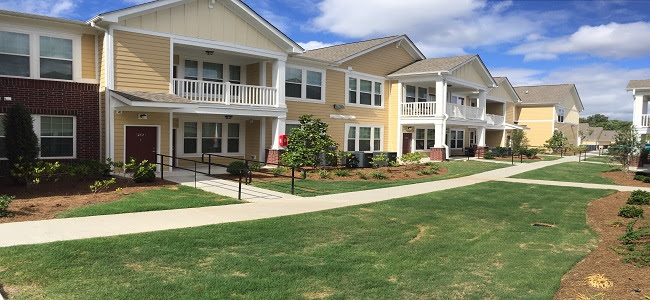
RENTERS IN THE US PLAN TO STAY PUT
DEMAND FOR RENTAL REMAINS STRONG

Hollywood – May 23, 2017
Home ownership has often been touted as the American Dream, but the desire to buy seems to be waning across various demographic groups. Although home ownership remains a goal for a percentage of Americans, many renters plan to continue renting for both the near- and long-term. In short, we don’t expect the demand for rentals to decrease any time soon.
Long-term rental plans
In a recent Freddie Mac renter survey, this finding stood out to us:
“The percentage of renters who expect to eventually own declined to 41% from 45% in the previous survey.”
So, for a large majority of renters, renting is not simply a placeholder, but a long-term lifestyle choice. The story above went on to highlight other interesting trends among renters: a strong majority prefer urban areas and would both pay more and downsize for the chance live in an urban setting; and many renters plan to stay in their current homes even if rents increase:
“Fifty-five percent of all respondents, and 60% of those ages 35 to 49, said they liked where they live and didn’t plan to move if their rents rose.”
Note the age range in the figure above. This survey indicates that even older renters – not just millennials or young professionals – plan to continue renting. If a multifamily community has provided the location and features renters want, it can reasonably expect to retain tenants for the longer-term.
Freddie Mac Multifamily’s executive vice president David Brickman draws a similar conclusion from the survey results, saying:
“It would appear from our new survey that renters today feel better about their finances, like where they are living, and view renting favorably. This is consistent with findings from earlier surveys that show a steadily growing number of renters have a positive view of renting.”
By-choice renters
Many news stories about home ownership vs. renting point out financial barriers that may prevent some people from buying, including lack of funds for a down payment or inability to qualify for a home loan. There is another side to this coin, however: people with the financial means to buy, but who have chosen to rent.
A recent study of U.S. Census data by RentCafe showed an interesting change:
“From 2005 to 2015, the number of renter households who earn more than $150,000/year increased by 217 percent…every single year since 2009, the largest increase in U.S. renter households came from high-income earners…”
Those numbers suggest, again, that renting is often a lifestyle choice for many people and not simply a matter of financial barriers to home ownership. For individuals with higher incomes, rentals in desirable settings with great amenities often hold greater appeal than single-family homes in other neighborhoods. Renting often gives people access to the neighborhood and lifestyle they want.
A story out of New Jersey indicates a demand in that state, as well as many East Coast states, for rentals with a lifestyle component. “It’s not just a place where you sleep; we’ve created a lifestyle here,” said Jason Kaplan, president of Kaplan Companies, citing amenities, lower maintenance and the ability to be more mobile as reasons New Jersey renters choose to rent. We have seen indicators of that trend nationwide for the past several years.
Demand for rentals
In short, rental demand remains strong nationwide, and many markets across the country have posted both low vacancy rates and rent gains in recent years. In its annual U.S. Multifamily Outlook, Yardi Matrix forecasts a deceleration of rent prices, but expects the multifamily market to continue in a healthy vein:
“When all is said and done, we expect rent growth to moderate to 3.9% in 2017, which is down from where it was through most of the last two years but still above the long-term average of 2.3%. Although growth will revert to more sustainable levels, multifamily remains a safe bet for most investors over the next few years.”
Supporting that projection, the research firm pointed out economic and demographic factors, as well as lifestyle trends, driving demand for rentals. The group expects those factors to stay in place for the next decade:
“The biggest factor is that demand for multifamily will likely be robust for years—even as long as a decade. The number of Millennials between the prime renter ages of 20 and 34 is projected to increase by two million before it peaks at almost 70 million in 2024. That coincides with a bump in the number of white, college-educated renters relocating to urban areas for the ‘18-hour’ city lifestyle that includes entertainment and access to public transportation.”
It’s worth noting that demand for rentals has also increased in suburban areas in recent years. Many suburban areas offer a more urban experience with access to transit, entertainment, dining and other sought-after lifestyle features – in addition to affordability and proximity to business centers.
Final thoughts
At PointOne Holdings, we continue to experience strong fundamentals and healthy demand across our multifamily portfolio. The Southeast region is primed for economic stability and continues to attract new renters with its overall economic health, jobs and attractive lifestyle options.
To learn more about PointOne Holdings’ investment opportunities in commercial real estate, please visit www.pointoneholdings.com. As always, we welcome questions, so please feel free to contact us at any time.
